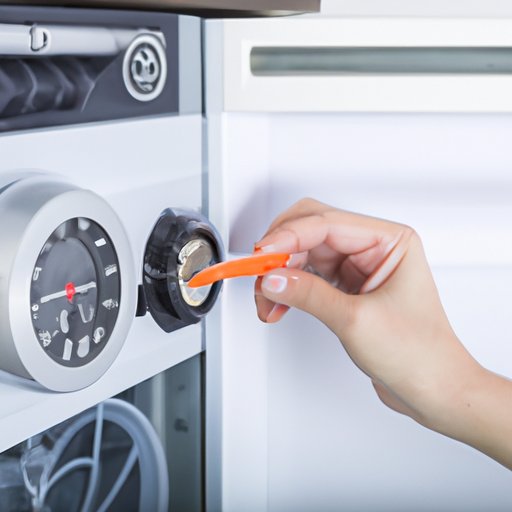Introduction
Temperature is a measure of the amount of heat energy present in a substance or environment. Refrigerators are essential household appliances that keep food items cool and preserve them for longer periods of time. The temperature of a refrigerator affects its performance, as well as the health and safety of the food stored inside. It is important to understand how to measure and maintain the temperature of your refrigerator to ensure optimal performance and food preservation.
How to Measure the Temperature of Your Refrigerator
The most accurate way to measure the temperature of your refrigerator is to use a thermometer. There are several types of thermometers available, such as digital, analog, and infrared. Digital thermometers are the most precise, but all types will provide an accurate reading if used properly. To measure the temperature of your refrigerator, place the thermometer in the center of the middle shelf and wait for the reading to stabilize before recording it.

Establishing the Ideal Temperature Setting for Your Refrigerator
The ideal temperature setting for your refrigerator should be between 34-38 degrees Fahrenheit. This range will ensure that food is kept at a safe temperature and will help maximize energy efficiency. To adjust the temperature setting, consult your refrigerator’s manual for instructions on how to do so. If you don’t have access to the manual, many refrigerators have a temperature control dial or button located on the interior or exterior of the appliance.

Tips for Maintaining the Correct Temperature in Your Refrigerator
In addition to adjusting the temperature setting, there are several other ways to ensure your refrigerator maintains the right temperature. Regular cleaning and maintenance is essential to prevent dirt and dust from building up on the coils and vents, which can cause the refrigerator to work harder and use more energy. Additionally, make sure the refrigerator is placed in an area with adequate ventilation and away from direct sunlight or heat sources. Check the door seals regularly to ensure they are tight and not allowing cold air to escape.
Troubleshooting Temperature Issues in Your Refrigerator
If you notice your refrigerator is not keeping food at the desired temperature, there are several steps you can take to troubleshoot the issue. First, check the temperature setting to ensure it is still within the recommended range. Next, check the power source to make sure it is working properly. Finally, check the door seals to ensure they are intact and not allowing cold air to escape.

The Benefits of Keeping Your Refrigerator at the Right Temperature
Maintaining the correct temperature in your refrigerator has many benefits. First, it helps to ensure the health and safety of the food stored inside. Keeping food at the right temperature also helps to preserve it for longer periods of time and prevents spoilage. Finally, ensuring your refrigerator stays at the right temperature can help to maximize energy efficiency and save money on utility bills.
Conclusion
Temperature is an important factor to consider when using a refrigerator. It is essential to understand how to measure and maintain the temperature of your refrigerator to ensure optimal performance and food preservation. By following the tips outlined above, you can ensure your refrigerator is running at the right temperature and reap the benefits of energy efficiency and food safety.


